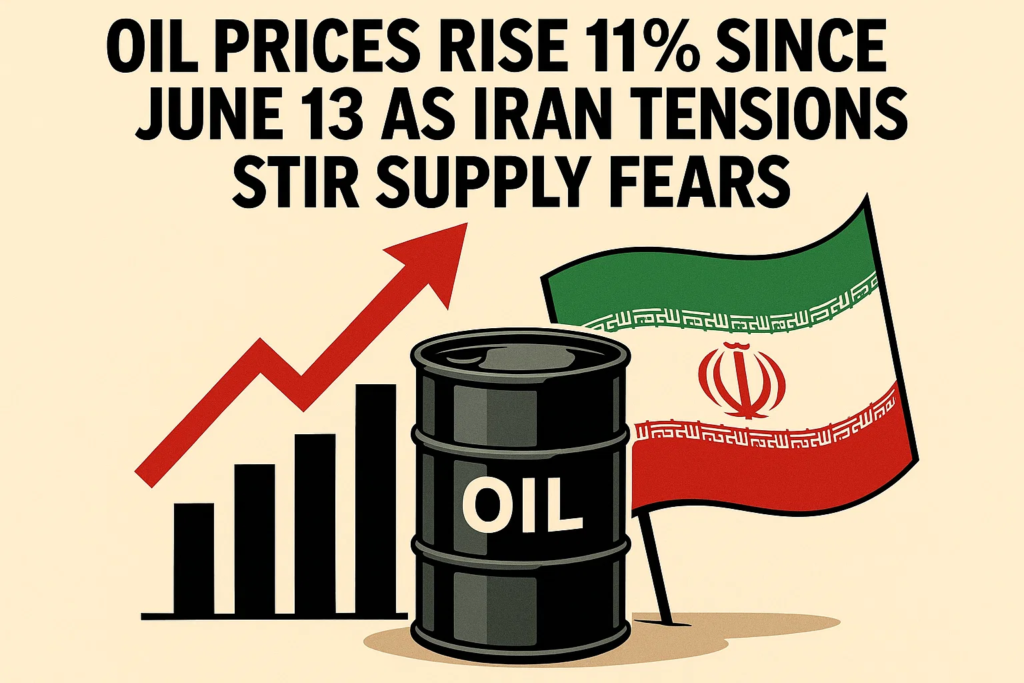Oil markets opened Monday with sharp gains after the United States joined Israel in attacking Iranian nuclear sites over the weekend—an escalation that reignited fears of supply disruption in the Middle East. However, prices flattened later in the session as investors awaited concrete signals of Iranian retaliation.
As of 09:04 GMT, Brent crude edged up 8 cents to $77.09 per barrel, while West Texas Intermediate (WTI) rose 3 cents to $73.87. Earlier in the day, both benchmarks surged to five-month highs—Brent hitting $81.40 and WTI reaching $78.40—before retreating amid cautious sentiment in European trading.
Brent is up 11% and WTI nearly 9% since the onset of hostilities on June 13. But with no direct supply disruption so far, traders are tempering expectations while still pricing in a geopolitical risk premium.
Iran Threatens Response as U.S. Joins Conflict
The conflict deepened after President Donald Trump claimed to have “obliterated” Iran’s key nuclear infrastructure in coordinated weekend strikes. Iran responded by branding Trump a “gambler” and warned that U.S. assets and interests are now legitimate targets.
As the third-largest oil producer in OPEC, Iran’s role in the global crude supply chain is critical. Its response could dramatically influence short-term price direction, particularly if the Strait of Hormuz, a key shipping lane for about 20% of global oil, is targeted.
Analysts caution that even the threat of disruption could delay shipments:
- Ole Hansen (Saxo Bank): “All eyes remain on the Strait of Hormuz … Even without a full-scale blockade, threats alone can rattle the market.”
- Goldman Sachs: If flows through Hormuz are halved for one month, Brent could spike to $110, followed by an extended 10% shortfall in oil output for nearly a year.
Volatility Expected Despite No Supply Cuts Yet
While prices remain supported by geopolitical risks, analysts say the premium could fade quickly if no real supply constraints materialize.
- UBS Analyst Giovanni Staunovo: “The lack of tangible disruption has tempered bullish sentiment. However, risk premiums remain elevated amid uncertainty.”
- Iran’s own reliance on the Strait for oil exports may deter a full closure, as a shutdown would harm its economy as much as its adversaries’.
For now, oil markets appear caught in a tug-of-war between fear-driven pricing and the reality of stable supply, making volatility the defining trend in the near term.


